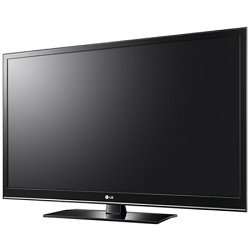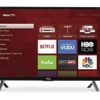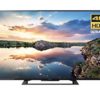LG 50PW350 50-Inch 720p 600 Hz Active 3D Plasma HDTV
- Bring your content alive with full 7200p HD 3D technology
- Incredibly high contrast ratio of 10,000,000:1 delivers incredibly vibrant colors and deeper and darker blacks
- Energy Star qualified so your entertainment experience uses less energy
- The 600Hz Sub Field Driving virtually eliminates motion blur
- At less than 1″ wide the new TruSlim Frame trims away the distraction of a wide frame.
If you’re big on sports and fast action, but not big on bulky frames, the PW350 3D Plasma is the HDTV for you. It’s got a blistering 600Hz refresh rate that keeps up with the fastest action, so there’s a clear picture with virtually no blur. Think plasmas have to be bulky? Think again. The TruSlim Frame gives it a sleek, thin profile that makes it stylish on or off.
3D Technology ChecklistThis product is 3D-related. To help you get a great 3D experience, use the checklist below to ensure you have everything you need. 3D viewing requires:A Display
First, you’ll need a 3D-ready display–whether it’s a 3D HDTV, 3D projector, or 3D computer monitor. These displays have more processing power than standard 2D models for displaying 3D images in rapid succession. A Source
Your display may be ready for 3D playback, but you’ll still need a device to read 3D content. This can be a cable box with a subscription to a 3D channel, a 3D Blu-ray Disc player, or a PlayStation 3 system.3D Cont
List Price: $ 899.99
Price: $ 899.99
Related
 LG 50PT350 50-Inch 720p 600 Hz Plasma HDTV
LG 50PT350 50-Inch 720p 600 Hz Plasma HDTVYou know what it is you enjoy. You get into sports, fast-action and entertainment that’s displayed in life like resolution. With a…
 LG 50PM4700 50-Inch 720p 600 Hz Active 3D Plasma HDTV
LG 50PM4700 50-Inch 720p 600 Hz Active 3D Plasma HDTVEnjoy 1080p HD that gives unprecedented depth to entertainment, virtually unlimited entertainment possibilities with LG Smart TV a…














Comments
One comment
TJ
March 15, 2012
Excellent entry level 3D TV,
I’ve had this TV for more than a week and spent some time playing with it and have watched different TV shows, several movies, both 2D and 3D. I think I now have a pretty good idea about how this TV performs.
First of all, let me start with a brief summary of pros and cons:
**Pros:
– Inexpensive
– Pretty good looking
– 3D
– Many advanced controls for tweaking picture quality, ISF calibration ready, as LG put it. This is a huge plus for an entry level TV
– Excellent picture quality and color accuracy, especially after being properly calibrated
– Low power consumption for a plasma TV, has built-in smart power-saving feature. After being calibrated, it’s less than 100 watts in 2D mode which is very low for a plasma TV and within the territory of LCD TVs.
**Cons:
– Only 720p. This actually doesn’t bother me because I hardly notice any difference in picture quality compared to my 1080p TV unless I get very close, something like 2-3 feet or so.
– A small annoying issue I found when I tried to calibrate the TV. No big deal but still annoying. I will explain later.
– Looks like a mirror. This is actually a problem for all plasma TVs, the technology itself. If your room is not dark enough, or the TV is facing a window, the reflection can be pretty bad. High end plasma TVs have some sort of filter or something like that to reduce reflection but they cost a lot more. If your room is pretty bright, get ready to buy a dark curtain.
Now let me go into some more details of my calibration process and how this TV performs.
In fact, the TV has very good color and gray scale accuracy in “Cinema” picture mode. I used my colorimeter, downloaded a free copy of ColorHCFR calibration software and AVS HD 709 calibration pattern disc to test the colors and gray scales. I found Cinema mode has good gamma, color temperature, and luminance accuracy. It’s not perfect, but it’s not too far off. The contrast should be a little higher but for an out-of-the-box mode, it’s very good. If anyone doesn’t bother with calibration, just switch it to Cinema mode and increase the contrast a little bit, and it’s good to go.
For those who are interested in more advanced calibration, the TV does come with 2 advanced picture modes called “expert 1” and “expert 2” with small “ISF” logos. These two modes have all you need for advanced calibration, either by an ISF-certified professional or do it yourself (Although I dig into these “expert” modes, I’m not an “expert”, not even close BTW). Go deep into one of these two “expert” modes, you can adjust individual RGB channels (both Contrast and Brightness), turn on color filters for adjusting color saturation and hue. The TV even has 20-point gray scale curve controls. Although this can be hard to use, it allows much more accurate gray scale adjustment. You also find primary and secondary color controls for CMS (Color Management System), which are rarely found in entry level or even mid-range TVs.
I spent a few hours playing with these advanced controls and the results were amazing. The luminance, gamma, color temperature curves were all very close to the targets with very low deltaE values. Of course they are not as low as what I can get with my graphic monitor, but those numbers and graphs are excellent for a TV. After calibration, the colors look natural and smooth, the skin tones look great. 3D movies look great as well. I did notice some crosstalk/ghosting in some dark scenes but it looks like this problem depends on the content as well. I saw very little ghosting when watching Tangled 3D, almost no problem with the Ultimate Wave: Tahiti 3D and a little more in Shrek 1 and 2 3D.
However, this was also where I found an annoying issue as I previously mentioned. The picture modes seem to work independently in different viewing modes like TV and Blu-ray. I have a blu-ray player connected to one of the HDMI ports. All my calibration was done in this viewing mode with the use of my blu-ray player. After everything was set and I achieved my desired results, There’s no way to apply the calibrated parameters to all inputs. I calibrated the “expert 1” profile (in blu-ray viewing mode) and “expert 1” in TV mode doesn’t have the same parameters, it actually doesn’t change at all. I had to manually copy the numbers to my notes and transfer them one by one. I found this very annoying even though it’s not a big deal and I could get around it. But it’s very strange.
Another issue I found pretty odd is the “expert” picture profiles are disabled in 3D view mode. So all your calibrated results have no meaning if you’re watching 3D movies. I understand that all energy saving features are disabled in 3D mode but the calibrated profiles are gone too? Very odd indeed. Fortunately, the “Cinema” picture profile still works and as I said, it does a good job.
This TV doesn’t have any…
Read more
Was this review helpful to you?

|